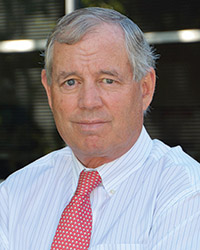
Dacon
2018 has seen the continuation of an aggressive commercial construction market that has been robust for the past five years. A major byproduct of the market intensity results in capacity issues that significantly affect the commercial construction industry – not just in Metro Boston but throughout New England. With vacancies historically low, rental rates high, full employment, and resources being scarce, this capacity challenge looks to continue in 2019.
Due to the accelerated market, talent across all disciplines within the construction and architecture sectors has simply evaporated. Experienced architects, CAD operators, project managers, superintendents, estimators and planners have become highly valued commodities. Subcontractors across trades are able to select desired projects. Competitive bidding still exists but design/builders or construction management firms are limited in the number of subcontractor bids they can offer clients. There will be no relief to these capacity issues until the construction market returns to a normal pace.
In assessing the number of non-CBA/Seaport design/build-to-suit projects under construction in Massachusetts and southern New Hampshire, there are 2.5 million s/f of projects in progress – 1.18 million s/f of which are build-to-suit projects. FedEx Ground is completing three buildings for major sorting centers totaling 770,000 s/f, two gut renovation and expansion projects in Wilmington and Quincy, Mass., and one ground-up center in Seekonk, Mass. Expeditors is under construction with a new 144,000 s/f distribution center in Peabody, Mass. SDS/LKQ is building a unique 40-foot clear height, 38,000 s/f distribution center served by 21 dock positions in Litchfield, N.H. A 48,000 s/f manufacturing and office expansion for Senior Aerospace Metal Bellows in Sharon, Mass. is in progress. There are three projects underway in the Myles Standish Industrial Park phase four in Taunton, Mass. that totals 140,000 s/f. A 48,000 s/f addition for L. Knife & Son who is a beer distributor in Kingston, Mass. is also progressing.
The remaining 1.34 million s/f of projects are all speculative buildings, 90% of which are high-bay warehouse and distribution buildings. Local and national development firms are in competition to satisfy that “last mile” of immediate distribution demand. The 430,000 s/f Campanelli Business Park industrial warehouse expansion has commenced on two buildings in Bellingham, Mass. A national developer is permitting 362,000 s/f of spec high-bay that is slated for a spring 2019 start also located in Bellingham, Mass. In Northborough, TA Realty is building a 220,000 s/f 32’ clear distribution center on spec. First Highland Management and Development in Readville, Mass. has a 70,000 s/f high-bay precast spec building up and ready for leasing. In Exeter, N.H., Monahan Development has permitted a 116,000 s/f spec high-bay warehouse located in the Garrison Glen Corporate Park. Claremont Companies is building a 67,000 s/f, four-story spec office building where they will occupy the top floor at Lakeshore Center in Bridgewater, Mass. that will be named Lakeshore Two. Colliers International is representing a two-story 49,600 s/f warehouse, flex, or life sciences spec building under construction in Woburn, Mass.
Construction costs for materials and labor are rising, reflecting the natural path of supply and demand. Construction firms are receiving higher cost bids with limited windows for holding quoted pricing. The foreign steel tariffs are affecting the psychology and timing of purchasing steel rather than across-the-board material hikes. Here at Dacon, our planning department calls it “a fluid market”, and results differ day to day, trade by trade. Overall costs have escalated over the past six months but not to the point of deterring the market momentum.
Looking to 2019, with the velocity of projects under construction, one would think that upon completion of over two million s/f of suburban build-to-suit projects, commercial construction would begin to quiet down. But as recent as 2016 coming into 2017, over four million s/f was being developed with capacity issues less acute than today, so I do not expect a huge downturn. This capacity issue within the commercial design and construction industry unveils a larger challenge – the need to inspire young professionals in architecture, CAD sciences, estimating and other commercial construction disciplines to develop strategies and initiate programs to remedy the capacity void.
Charles Reilly is vice president of Dacon Corp., Natick, Mass.








